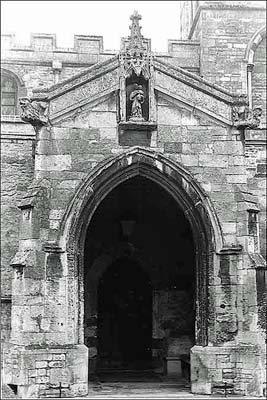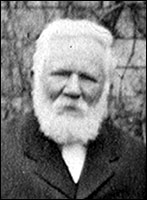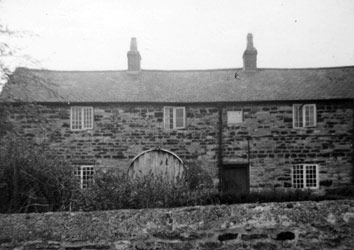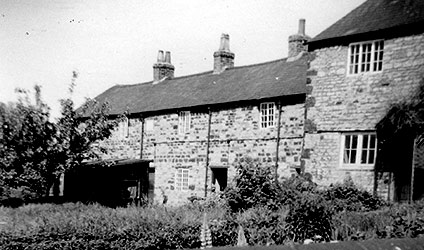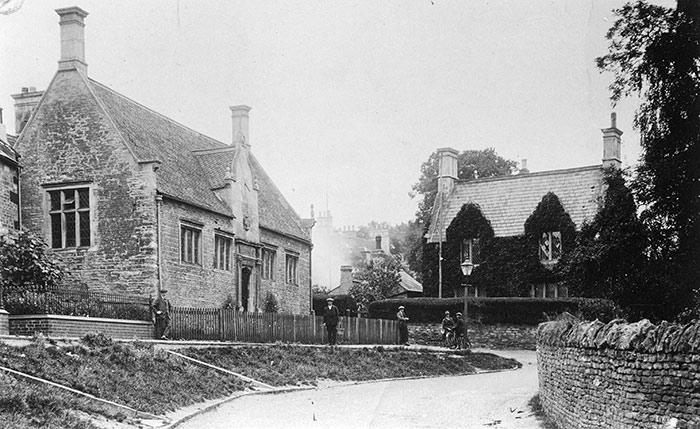Researched by John Meads 2011 |
||||||||||||||
|
||||||||||||||
|
||||||||||||||
|
|
||||||||||||||
| From the 14th to mid-16th century persons of wealth might endow a gild or chantry. A gild was the forerunner of the later craftsmens guilds and fraternities and a chantry was a chapel or altar endowed by its founder with sufficient funds to maintain a priest to sing masses on the donor's behalf. This practice was abolished in 1547.
However, some people like Agnes and William Scott in Burton Latimer, also created endowments, the proceeds of which were to provide relief for the sick and poor of the parish, and this endowment lives on today as part of the Ancient Parish Charity which makes grants to the elderly and needy to help pay their winter fuel bills. Many elderly Burtonians will remember the land on the Wold known as Scott's Forty Acre and Scott's Charity Cottages in Church Street, the rents from both going to support the charity or its successor. CHARITIES TO HELP THE SICK AND POOR AND MAINTAIN THE FABRIC OF THE CHURCH On an inclosure of lands in this parish in 1804, an allotment of ten acres was set out in lieu of headlands, formerly appropriated to the repairs of the church. The allotment is let to Thomas Eady, as yearly tenant, at £12.10s. a year, the fair annual value, and the rent is applied for the repairs and service of the church. Another allotment of between three and four acres was set out in lieu of four acres of land, formerly called the SCOTT’S The sum of £10, given by William and Agnes Scott, in or about the year 1514, for the relief of poor people, and a further sum of £40 arising from the rents of some of the charity estates were laid out in the purchase of land, for which, on the inclosure, an allotment of 40 acres was awarded. The allotment is let by the minister and churchwardens to different poor persons for gardens, at rents amounting in the whole to £44 a year, and the rents are partly applied in affording relief to poor persons in cases of sickness and casual misfortunes, and are fairly distributed on the Burton feast-day among poor persons not receiving weekly relief from the parish. MULSOE’S The sum of £10 left by Anne Mulsoe, to be applied to charitable uses at the discretion of Robert Hicks, and £10 given by the said Robert Hicks, were laid out in the purchase of land at Irthlingborough, and a piece of meadow ground, containing an acre or thereabouts, in the open field of Little Addington, which was conveyed in 1823 to trustees, to the intent that the rents should be applied in apprenticing poor children of Burton Latimer, in pursuance of the directions of Robert Hicks. An allotment of three acres, or thereabouts, awarded in lieu of the land at Irthlingborough, is let to John Pearson as yearly tenant, at £7 a year, and the ground in Addington is let to William Payne at £1 15s. a year. The lands are let by the churchwardens and overseers of the poor of Burton Latimer, and the rents are applied in apprenticing children with *** of ** for each child put out, as opportunities occur. In pursuance of the will of Richard Hopkins, the date of which is unknown, the rent of a close or piece of land in Burton Latimer, containing 1 acre 3 roods, or thereabouts, which is let by the churchwardens to William Wood, as yearly tenant, at £6 a year, is laid out in bread, distributed at the church on Sundays among 12 poor people. POOR’S ALLOTMENT An allotment of seventy acres was awarded on the inclosure to the lord of the manor, minister, parish officers and other inhabitants, upon trust to apply the rents to the use of the poor in meat, corn, clothing or fuel, at the discretion of the trustees. This allotment is let to William Jacquest for 21 years, from Michaelmas 1828, at the yearly rent of £40 for the first four years, and for £48 for the remainder of the term, and the land is properly let. The rent is laid out in coals, which are distributed by the churchwardens among poor persons, in proportion to the size of their families.
DOLES William Luck, by will, dated 3rd July 1546, charged his land called Pywell’s Land, with the yearly payment of 7s., that is to say 6s, to the use of the town of George Plowright, by deed in 1633, in consideration of £6 13s. 4d., given by Owen Owen for the poor, charged the said lands, called Pywell’s, with the payment of 6s a year for the poor of The sum of 12s. a year is now paid on account of the children by Mr. John Sudborough in respect of a house and premises in Burton Latimer, which were substituted to bear the charge by some former owner in lieu of the land called Pywell’s, and the amount is added to and applied with the rent of Scott’s Charity Land. DICKENSON’S William Dickenson, by will dated 1727, bequeathed £60 for the poor not receiving parochial relief. This fund was for some time placed out on mortgage, but was afterwards, as is represented, laid out in defraying expenses concerning the allotments set out in lieu of some of the charity estates. By her will proved 19 Sept. 1856 Elizabeth Dopping Arnold gave £100 Consols to the rector and churchwardens for the poor. The dividends amounting to £2 10s. yearly are applied in April for the relief of the poor. The several sums of stock are with the Official Trustees of Charitable Funds
Click here to read about a beneficiary of these Charities More recent changes In 1975 the Charity Commissioners approved a new scheme which consolidated the above charities (apart from the part held for educational purposes from the William and Agnes Scott charity) to form the Burton Latimer Ancient Parish Charity. The income from the former charities being invested in the Charities Official Investment Fund. It ceased to provide food gifts in the 1970s and now gives grants early in the New Year to help pay the heating bills of the elderly and those in need. EDUCATIONAL CHARITIES From a linen backed booklet marked "Burton Latimer Charities" on the cover First page:- Burton Latimer Charities of which I am Trustee - A.A.Y. BARWICKS CHARITY Five Acres of Present Trustees created in 1839 - Thos. Burnaby, T.S. Grimshaw, B.J. Pulver, John Eady, H.B. Stopford, G.S. Robinson, J.W. Paul, W.M. Dolben, A. A. Young, G.P. Stopford, J. Harper, Edmund Eady, Thos. Eady, John Stokes.
SCOTT’S CHARITY A Farm house with one close adjoining in Burton, formerly the estate of William Scott, the house now or lately used as a poorhouse, the said Close now in the occupation of John Eady, gardener, also twelve several cottages in Burton nearly adjoining the said farmhouse. Also a certain field called South Field in
A Charity Commisioner's Report in 1905 states: The Free School The school is endowed with ten acres of land in Cotton Marsh, in the parish of Hardingstone, which was settled by Elizabeth Burbank by deed, dated 1st June, 23rd The school property was last conveyed by deed dated the 24th May 1792, to new trustees and is vested in Sir John English Dolben, Francis Dickens, Esq., Allen Edward Young, Esq., and others, the survivors of those trustees. The master of the school occupies the house and receives the rent of the land (which he rents at £30 a year) and the annuity, and he instructs all such children of the inhabitants of Burton Latimer as are sent to him, and are then able to read a little, in reading, writing and arithmetic, the number of scholars being on an average between 25 and 30. It does not appear that the school has ever been maintained as a grammar school. More recent changes |
||||||||||||||
